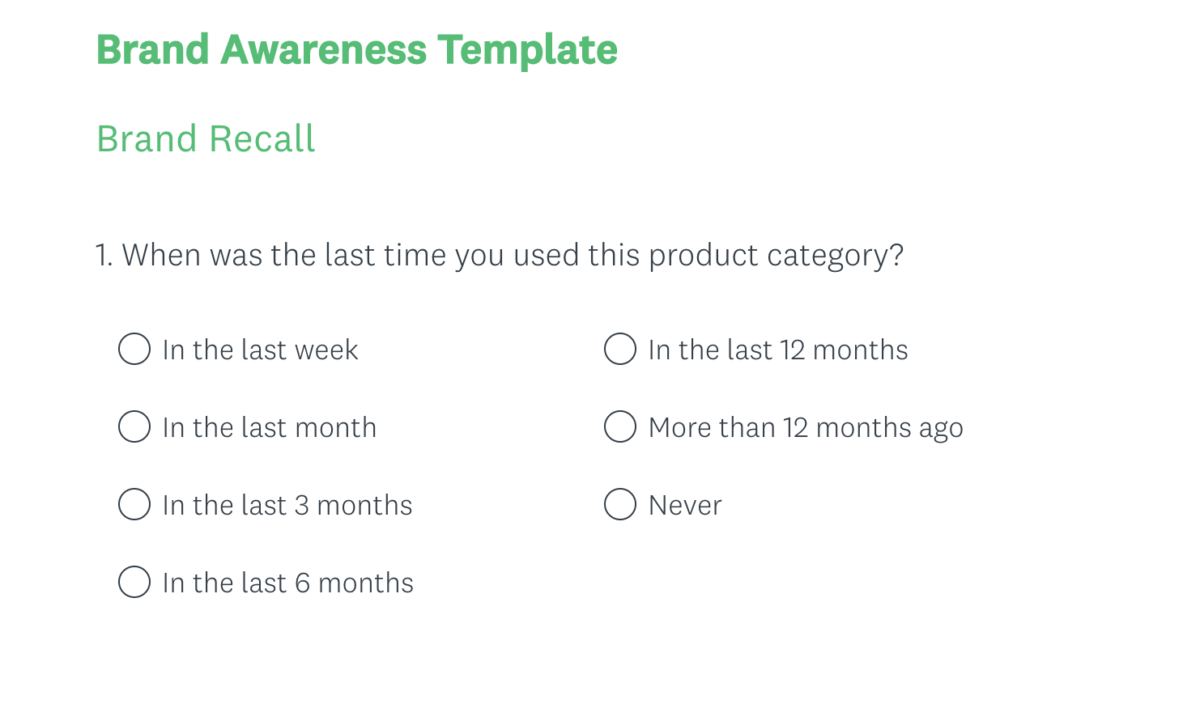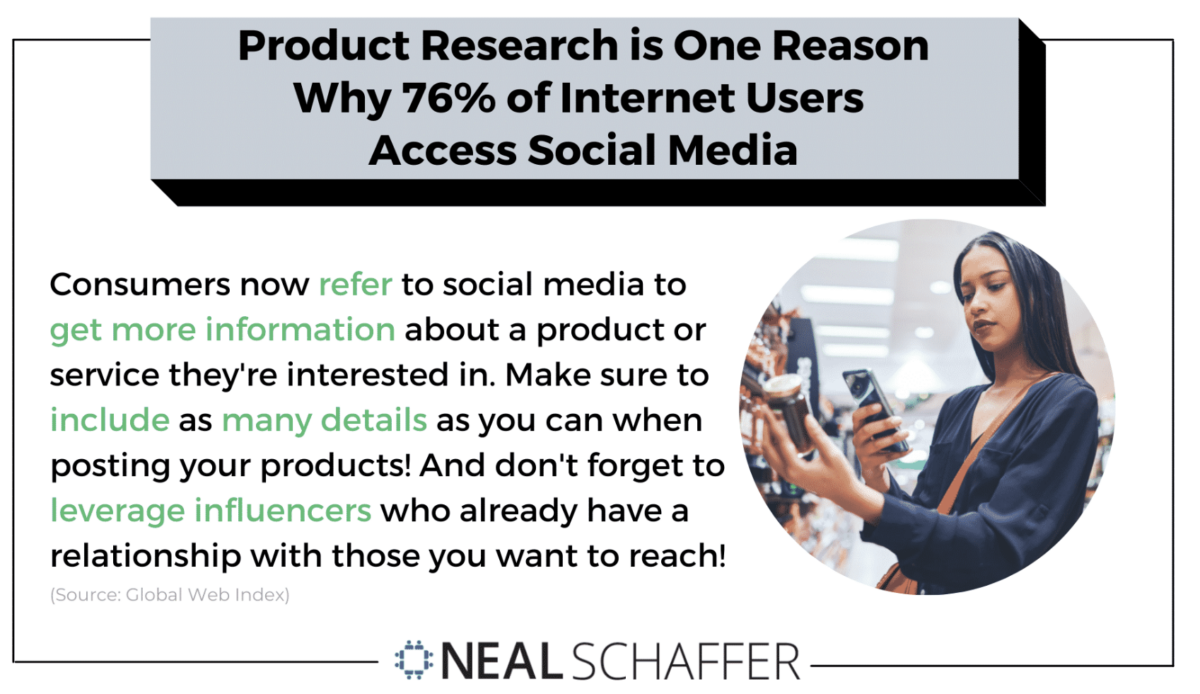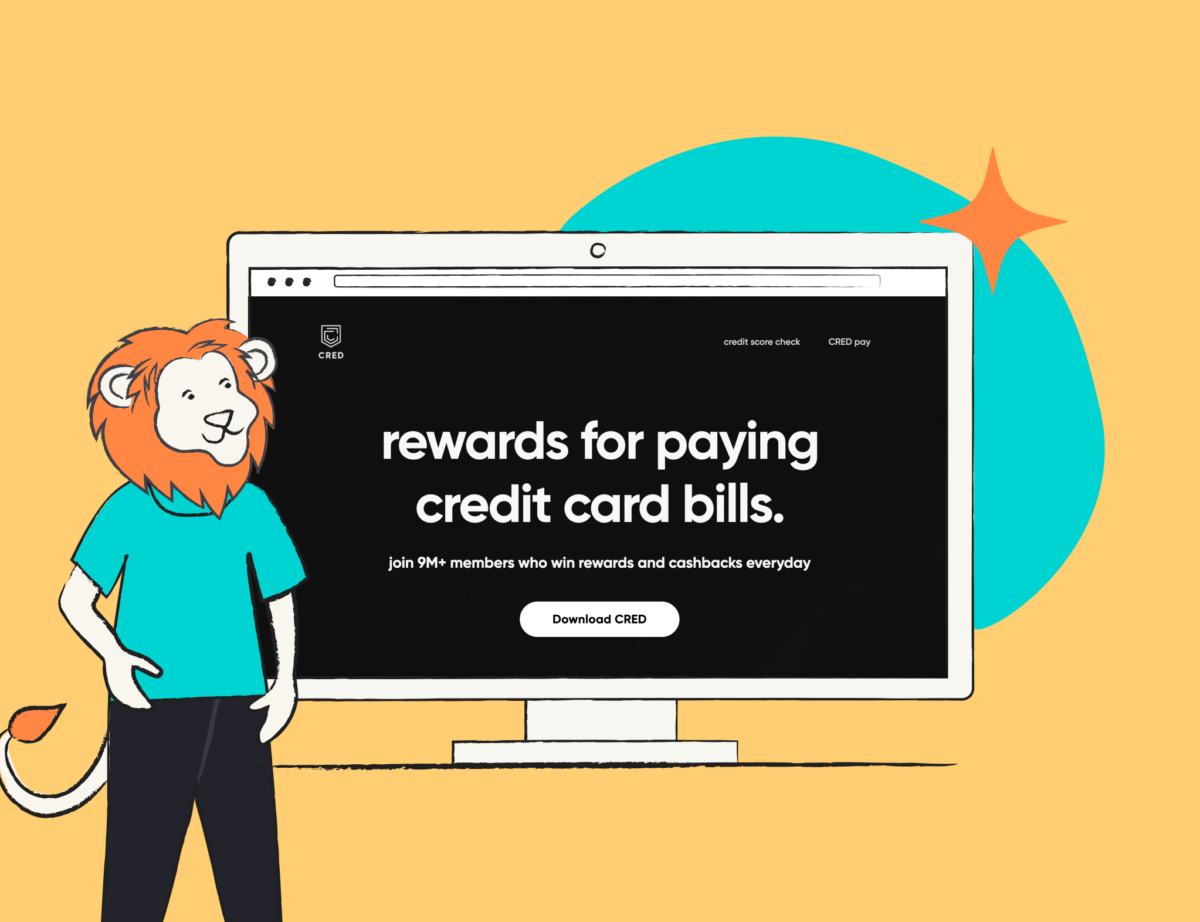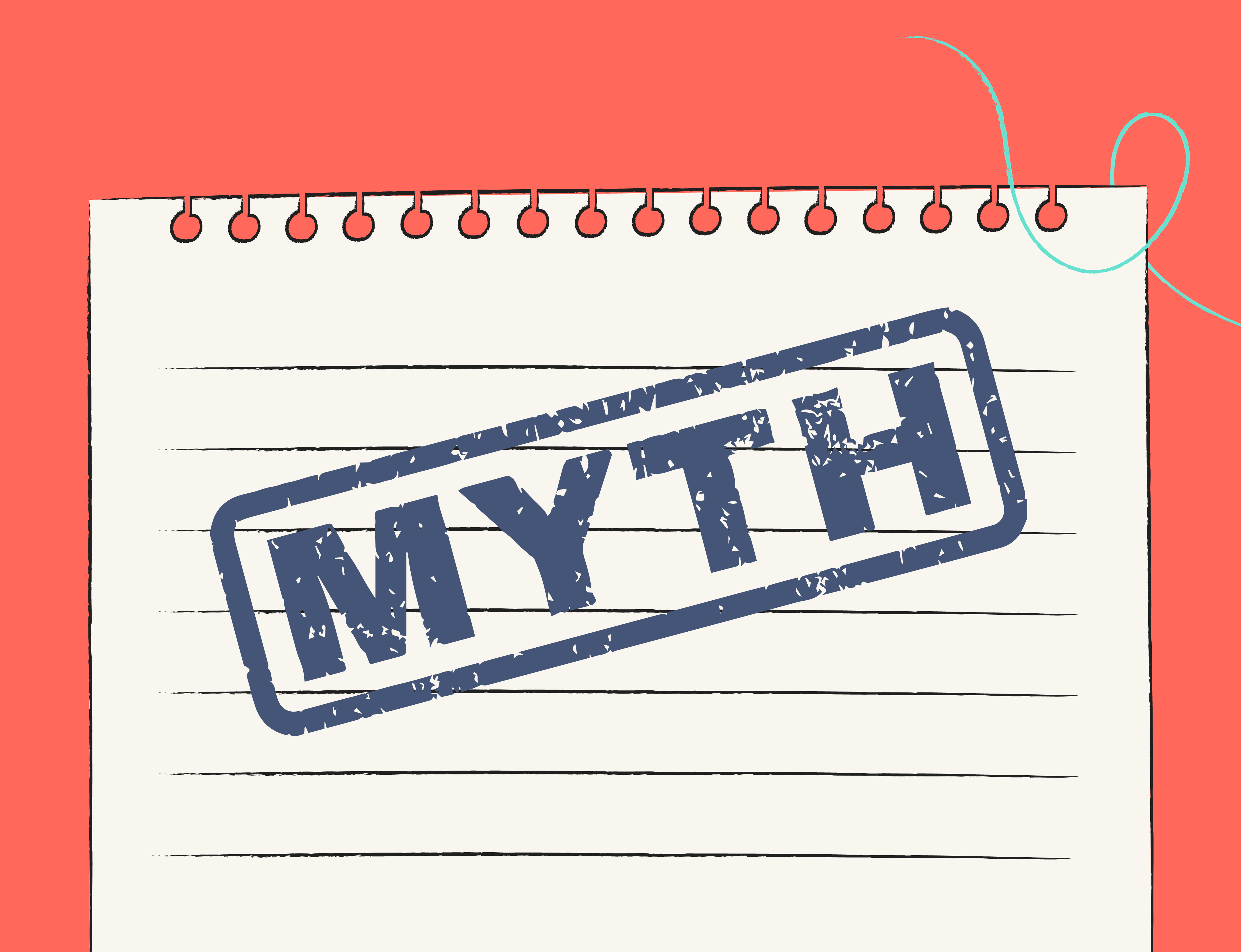Are you struggling to gauge how well you’re engaging your target audience? Maybe you’ve invested in a large-scale brand awareness campaign, and you want to measure just how successful it was? While you may get a vague idea of your brand perception by monitoring social media conversations and their sentiment, this isn’t a reliable metric.
Instead, you need to monitor your levels of brand recall amongst your ideal customers. There are two main categories of awareness: aided and unaided. But what’s the difference? And are they both important?
In this complete guide, we’ll be answering those questions in detail so you can start building brand awareness effectively. Maybe, with our help, you might even be the next Nike, Adidas or Coca-Cola.
What is brand awareness?
Brand awareness refers to the level of familiarity and recognition that consumers have with a particular brand. It is a measure of how well consumers are aware of a brand’s existence, its name, its products or services, and its overall identity. For this reason, it is an essential component of brand equity and plays a significant role in shaping consumer perceptions and preferences.
Why is it important to measure brand awareness?
By measuring brand awareness, you will receive essential insights that will support decision-making across all of your departments. It helps marketers make informed choices about target markets, marketing channels, and promotional strategies. Additionally, the data received through measuring brand awareness can assist sales teams in understanding customer perceptions and tailoring their selling approaches accordingly.
It also provides valuable feedback to guide brand strategy and communication efforts, helping you understand which aspects of your brand identity are resonating with consumers and which areas may need refinement. This will also help inform decisions on messaging, brand positioning, and the allocation of marketing resources.
Ultimately, measuring brand awareness can reveal growth opportunities by identifying segments or markets with low recall. This information enables you to allocate resources and develop targeted marketing initiatives to increase awareness among untapped audiences, expanding your customer base and market presence.

What is the difference between unaided brand awareness and aided?
Unaided brand awareness and aided brand awareness are two measures used in marketing research to understand how and if consumers remember a particular brand. The key difference between the two lies in how the recognition is prompted or assisted during the survey.
- Unaided Brand Awareness: Unaided brand awareness refers to the level of brand recognition or recall that consumers have without any specific prompting or assistance. In other words, respondents are asked to recall or name brands in a particular category without being given any options or cues. This form provides insights into the spontaneous awareness of a brand and reflects how deeply it is ingrained in consumers’ minds. This is often referred to as top-of-mind awareness.
- Aided Brand Awareness: Aided brand awareness, on the other hand, involves providing respondents with prompts or options to assist them in recognizing or recalling brands. Prospective customers are presented with a list of brands, logos, slogans, or other cues and are asked to indicate which brands they are familiar with. This form helps gauge the level of familiarity with a business when consumers are provided with specific cues.
In summary, unaided brand awareness measures the spontaneous recall or recognition of a brand without any assistance, while aided brand awareness measures brand familiarity when respondents are prompted. Both measures provide valuable insights and help marketers understand the effectiveness of their marketing efforts.
How should you measure brand awareness?
Now you know exactly what both types of brand awareness mean, how do you know which one you should measure? Let’s break down the examples and benefits of both so you can decide what type of market research suits your company best.
Examples of unaided brand awareness questions
So, if you were conducting an unaided brand awareness survey, you’d likely use open-ended questions. This will help give you insights into whether your target market recalls your business. Here are a few common examples:
- Can you name any smartphone brands?
- Which fast food restaurants come to your mind?
- What car brands can you think of?
- Name some sports apparel brands.
- Which soft drink brands are you aware of?
In these examples, the respondents are asked to spontaneously recall brands within a specific category or industry. Their responses indicate which brands come to mind naturally.
This will give you an insight into the market share of an industry. If multiple survey respondents repeat similar answers, then it’s clear which companies are nailing their brand strategy.

Benefits of unaided brand awareness
- Accurate measure of brand salience: Provides a more accurate measure of a brand’s salience or prominence in consumers’ minds. It reveals the businesses that naturally come to mind without any external influence, reflecting their true level of awareness.
- Differentiation from competitors: Helps identify brands that have successfully differentiated themselves from competitors. When a company is spontaneously recalled by consumers, it signifies that they have made a lasting impression and stand out in a crowded market.
- Indication of brand equity: Serves as an indicator of a brand’s equity and the strength of its association with the product or service category. Companies with high unaided awareness are likely to be perceived as more established, credible, and trustworthy.
- Insights into brand positioning: Provides valuable insights into the positioning of a brand and whether it is associated with specific attributes, benefits, or emotions, allowing marketers to understand the effectiveness of their strategies.
- Early detection of market trends: Helps marketers detect emerging trends or shifts in consumer preferences. By monitoring changes in the brands that come to mind, businesses can identify new competitors, evolving consumer needs, or emerging market segments.
- Evaluation of marketing effectiveness: Allows marketers to assess the impact of their marketing efforts on brand recognition and recall. By tracking changes in unaided awareness over time, businesses can evaluate the effectiveness of their advertising, promotions, and brand-building initiatives.

Examples of aided brand awareness questions
Aided awareness questions usually follow a multiple-choice structure within a product category. The following are examples of how you could phrase your survey questions:
- Which of the following smartphone brands are you familiar with?
- Please indicate which fast food restaurant logos you recognize.
- Which car brands from the following list have you heard of?
- Please select the sports apparel brands you are familiar with.
- Which of the following soft drink brands have you seen or heard of?
In these examples, respondents are given specific cues or prompts such as brand names, logos, or options to assist their recognition or familiarity with brands. This can provide insights into which brands they are familiar with and their levels of brand loyalty.
Benefits of aided brand awareness
- Identification of potential customers: Helps identify potential customers who may not be familiar with a brand spontaneously but recognize it when prompted. This information enables you to target specific segments or demographics for your campaigns and tailor your messaging accordingly.
- Benchmarking against competitors: Allows for benchmarking against competitors within a specific market or industry. By comparing aided awareness levels, businesses can assess their relative position and track their progress in terms of brand recognition compared to their competitors.
- Evaluation of marketing communication: Helps evaluate the effectiveness of marketing communication efforts such as advertising campaigns, sponsorships, or endorsements. By measuring changes in aided awareness before and after specific marketing initiatives, businesses can assess the impact of their communication strategies and make necessary adjustments.
- Insights for new product launches: Can be particularly useful for new product launches. By measuring aided awareness for the parent brand or company, businesses can assess the potential halo effect or leverage the existing brand equity when introducing new products or extensions.
- Informing market expansion strategies: Can inform market expansion strategies by understanding the level of brand recognition in different markets or regions. This means you can make informed decisions about where to allocate resources, invest in marketing efforts, or tailor your strategies to enhance brand awareness in specific areas.

How to grow brand awareness
So, you’ve sent out your surveys, and the results are not very inspiring. Don’t panic. It takes a lot of time, patience, and effort to achieve brand awareness. Aside from your usual marketing strategy, it’s worth putting in a little extra effort on the side. Here are some top tips to fast-track your growth.
Public speaking
Plenty of people start quaking in their boots when they hear the dreaded words ‘public speaking’, and whilst in-person events are a great opportunity to spread the word, luckily for you, the virtual world is just as effective now.
If the idea of standing on a stage and seeing hundreds of faces staring back at you makes you want to lock your doors and hide in bed, try podcasts or youtube videos. This will help position your brand as a thought leader within the industry, meaning it will be easier to attract the attention and trust of your audience.

Content marketing
Without your website showing up on the SERPs (search engine results pages), it will be incredibly difficult for people to find your company. A great way to improve this is by setting up a content marketing blog that answers the kinds of questions your audience will be asking.
To do this effectively, you’ll need to take SEO (search engine optimization) into account. This means conducting extensive keyword research to ensure you’re targeting the right subjects. You’ll also need to follow other SEO practices like:
- Producing well-structured content
- Paying attention to alt-text on images
- Put time into your metadata
Social media
When 58% of the world’s population uses social media, it’s essential you tap into the power of this form of marketing. However, doing your research is a necessity before you begin a social strategy.
Which channel do your ideal customers spend most of their time on? This will inform where you dedicate your time and resources to ensure you make the biggest impact.
It’s also important to plan ahead. What kind of social media presence do you want? How often do you want to post? Do you want to engage with your followers? This will depend on your brand values and personality.

Advertising
Many social networks offer specific ‘awareness’ or ‘reach’ ads designed to target those who are most likely to recall your brand. These are a great way to track the effectiveness of your campaign as they often provide a metric of the estimated number of people that will be able to remember your company.
Aside from social ads, you can also invest in pay-per-click advertisements (PPC). To do this, you’ll need to research the most effective keywords and subjects to decide which pages you’ll want to promote. This is a great solution for smaller businesses with less budget, as you only pay for real results.
Conclusion
Brand tracking will help you nail your marketing strategy. Once you know where you stand in comparison to your competitors, you’ll know what you need to work on to grow. It’s a waste of time and resources to keep investing in campaigns if you don’t measure their effectiveness.
So, it’s time to ask the audience and go back to the drawing board. Don’t bury your head in the sand. Seeing your brand messaging not getting through may be a hard pill to swallow, but it’s the first step to building the business you want.










